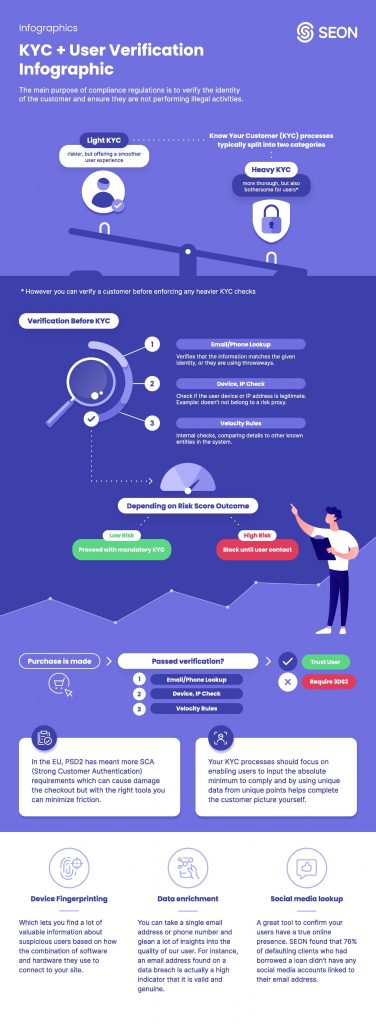What Is Smurfing?
Smurfing is when someone launders money by breaking it up into several smaller sums, hoping to evade detection. It is also known as structuring.
By making many small transactions, money mules who use the smurfing method try to avoid setting off suspicious activity reporting thresholds, which would naturally raise suspicion.
An altogether different type of smurfing is related to fraud in professional gaming and real-money gaming, in which case it means creating several user accounts to manipulate the platform or the rankings.
What Is a Smurf?
A smurf is a money mule who launders money by smurfing: splitting large sums into smaller parts to avoid being detected.
Because of the unusual activity it requires, smurfing is generally understood to be done by complicit or at least witting smurfs, per the FBI’s categorization of money mules.
Smurfing is sometimes also called “cuckoo smurfing”, and more so when it involves unwitting or unwilling participants.
How Does Smurfing Work?
Smurfing is a type of money laundering done by money mules who are, in this particular case, also called “smurfs”:
- The smurf receives illegally obtained funds.
- The smurf splits the funds – digitally or physically – into amounts just below the declaring, reporting, or alert threshold.
- The smurf works alone or with others to launder (“layer”, “mule”) the funds, working separately with each smaller sum.
- Once laundered independently, the sums can be consolidated into one account again, if needed.
- The funds are received by the criminal.
A simple description of smurfing comes from Europol:
“Carrying sums just under the reporting threshold on a frequent basis, collectively amounting to large sums.”
“Smurfing” is also used to describe any unlawful or questionable breaking up of larger sums to escape detection.
For instance, in 2016, the head of the U.S.A.’s Transport Security Administration was removed for giving himself an improper bonus of $90,000.
Hoping to hide this activity, the man in question, Kelly Hoggan, had awarded himself nine payments of $10,000 rather than one lump sum of $90,000 – but was eventually caught.
Why Is Money Laundering Called Smurfing?
Not all money laundering is smurfing, and not all money mules are smurfs. In the sense of breaking up large sums of money into multiple smaller sums to launder them, smurfing is an allusion to the Smurfs from the comic franchise, because they are also many, almost identical and small.
This is all according to an NBC News article, which also notes that the person who coined the term was Gregory Baldwin, a lawyer based in Miami.
Other sources agree on the symbolism of “smurfing” but point out that it was likely initially introduced in drug user slang, who would make small purchases of their preferred substances or drug-making ingredients from several sources, to then abuse them or use them to produce other drugs.
What Is Smurfing in iGaming?
It’s setting up secondary accounts to avoid damaging the stats or status of your main account – no matter if it is allowed or not on the iGaming platform.
In the field of iGaming, including online casinos, betting, poker and other real money games played online, which is equally susceptible to fraud, smurfing has an entirely different meaning: It is setting up secondary accounts for any reason, despite not being allowed to.
The reasons behind smurfing in iGaming can include:
- to match a lesser skilled player without them knowing your real skill
- to experiment and learn without damaging the stats of your main accounts
- when referring to multi-accounting in general, as part of an attempt to fraudulently claim bonuses you are not entitled to
- to facilitate other scams such as matched betting or arbitrage
As most online real-money gaming providers forbid more than one account per person, iGaming smurfing is frowned upon or outright banned – but, unlike smurfing in banking, it is normally not criminal activity.
We should also note that this concept of smurfing also applies in multiplayer and/or online video games in general, where we see skilled esports players creating alt accounts to battle it out with lesser skilled players – for various reasons, benevolent as well as malevolent.
Examples of Smurfing in Fraud
Smurfing is used widely as a safeguard against getting caught when attempting to launder money. For instance:
- Former footballer Ryan McDowell was jailed in 2018 for running a smurfing ring that laundered at least £692,000/$931,270 (per Daily Mail)
- In 2019, £3.6/$4.84 million found on 95 different bank accounts was identified as a result of smurfing. The funds had been deposited in several small transactions (per Interpol)
- Criminals using crypto ATMs, smurfing and bank drops as part of their MO were caught by the Spanish police and Europol in 2018, estimated to have laundered up to €9/$11 million (per Europol)
How to Detect Smurfing Activity as a Business
Identifying and stopping smurfing in your organization largely depends on your sector.
How to Detect Smurfing in Banking and Finance
Stopping smurfs in their tracks when it comes to banks, building societies, and financial organizations means having solid know your customer (KYC) strategies in place, and implementing aml fraud detection.
Nowadays, there are platforms on the market that help companies with their AML efforts by harnessing the power of fraud detection using machine learning and heuristics.
Instead of employing manual document review workflows, which are costly and prone to human error, advanced solutions use techniques such as social media lookup, data enrichment and device fingerprinting to reach conclusions and assign risk scores per user or per transaction.
This allows risk analysts to make better – and better-informed – decisions.

How to Detect Smurfing in iGaming and eSports
Smurfing detection and prevention in online and competitive gaming focuses on strategies and tools against multi-accounting. These include IP analysis, phone number analysis, and email analysis.
Moreover, device fingerprinting will generate and use browser hashes, device hashes and cookie hashes to inform the gaming provider if multiple users use the exact same device for different accounts.
Such activity does not always indicate smurfing, but it is good to keep in mind and take into account when evaluating overall user behavior.
Smurfing is just one of the ways fraudsters will try to avoid detection. Find out more about how we – and you – can stop them.
How Does It Work?
Sources
Europol: Why Is Cash Still King? Strategic Report
FBI.gov: Don’t Be a Mule: Awareness Can Prevent Crime
NBC News: Congress Rips TSA for Long Lines, Abuse, ‘Smurfing’ Bonus Practices
NCA: National Strategic Assessment of Serious and Organized Crime
Europol: Cryptocurrency laundering as a service: members of a criminal organisation arrested in Spain








